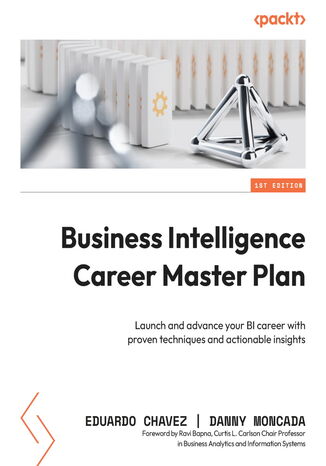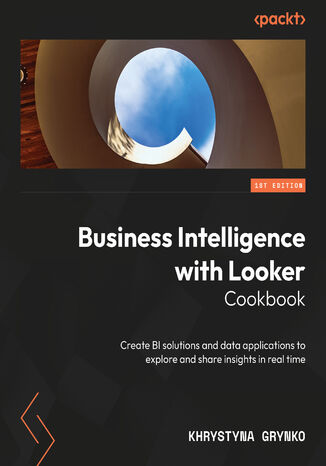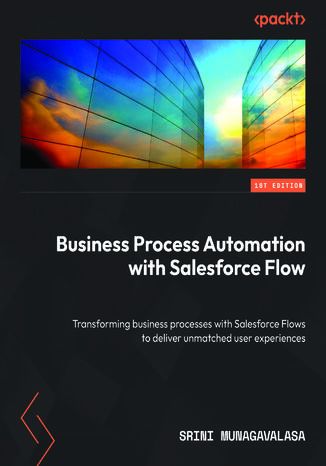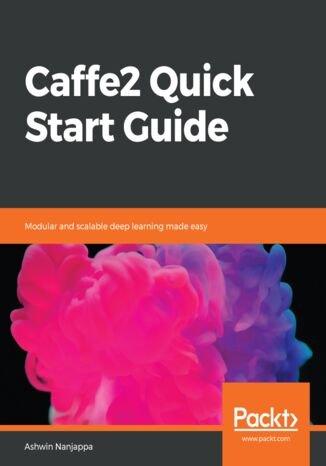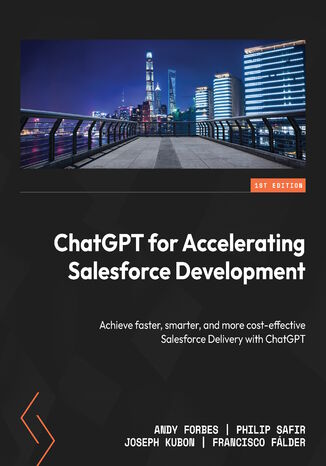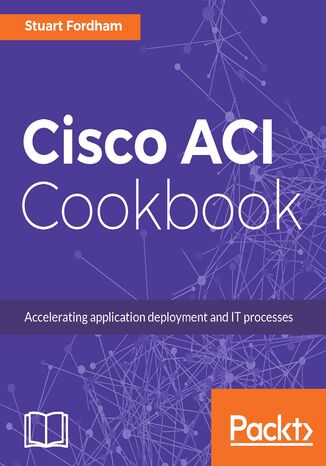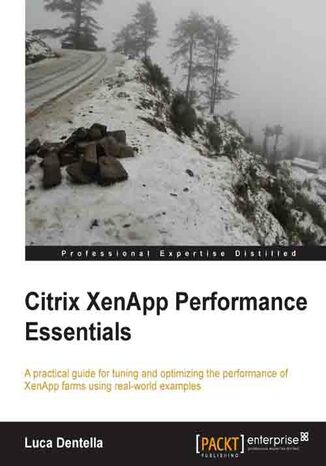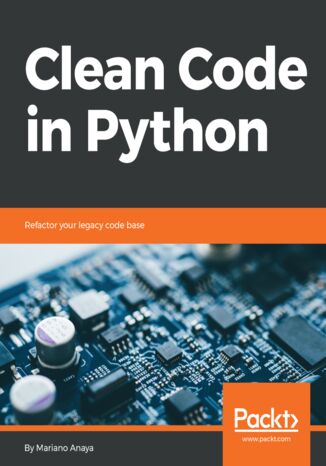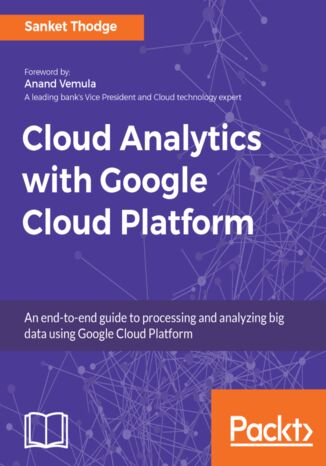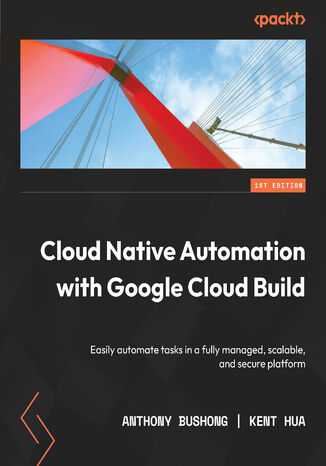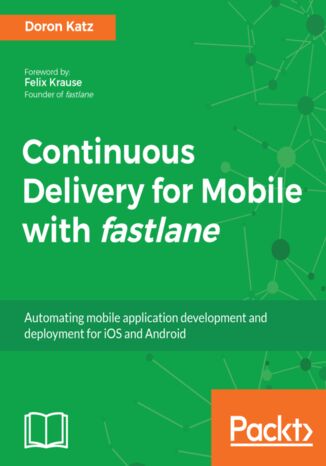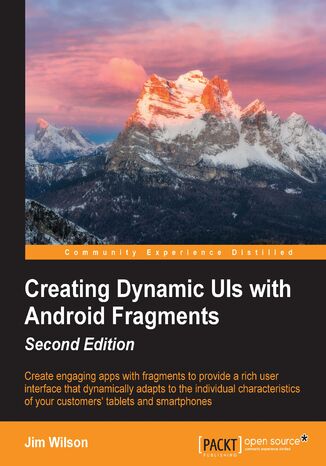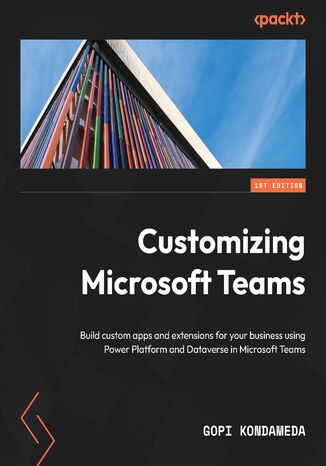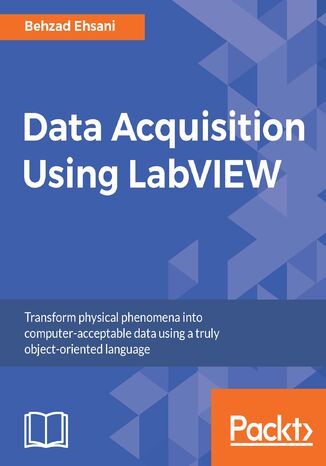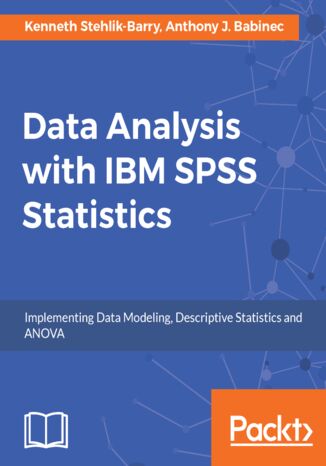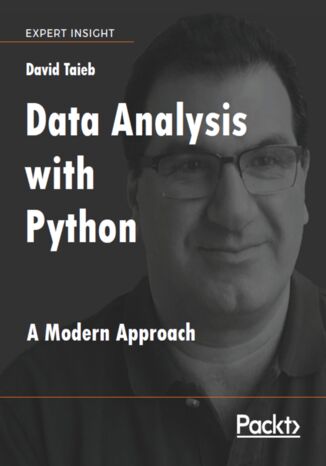Kategorie
Ebooki
-
Biznes i ekonomia
- Bitcoin
- Bizneswoman
- Coaching
- Controlling
- E-biznes
- Ekonomia
- Finanse
- Giełda i inwestycje
- Kompetencje osobiste
- Komputer w biurze
- Komunikacja i negocjacje
- Mała firma
- Marketing
- Motywacja
- Multimedialne szkolenia
- Nieruchomości
- Perswazja i NLP
- Podatki
- Polityka społeczna
- Poradniki
- Prezentacje
- Przywództwo
- Public Relation
- Raporty, analizy
- Sekret
- Social Media
- Sprzedaż
- Start-up
- Twoja kariera
- Zarządzanie
- Zarządzanie projektami
- Zasoby ludzkie (HR)
-
Dla dzieci
-
Dla młodzieży
-
Edukacja
-
Encyklopedie, słowniki
-
E-prasa
- Architektura i wnętrza
- Biznes i Ekonomia
- Dom i ogród
- E-Biznes
- Finanse
- Finanse osobiste
- Firma
- Fotografia
- Informatyka
- Kadry i płace
- Komputery, Excel
- Księgowość
- Kultura i literatura
- Naukowe i akademickie
- Ochrona środowiska
- Opiniotwórcze
- Oświata
- Podatki
- Podróże
- Psychologia
- Religia
- Rolnictwo
- Rynek książki i prasy
- Transport i Spedycja
- Zdrowie i uroda
-
Historia
-
Informatyka
- Aplikacje biurowe
- Bazy danych
- Bioinformatyka
- Biznes IT
- CAD/CAM
- Digital Lifestyle
- DTP
- Elektronika
- Fotografia cyfrowa
- Grafika komputerowa
- Gry
- Hacking
- Hardware
- IT w ekonomii
- Pakiety naukowe
- Podręczniki szkolne
- Podstawy komputera
- Programowanie
- Programowanie mobilne
- Serwery internetowe
- Sieci komputerowe
- Start-up
- Systemy operacyjne
- Sztuczna inteligencja
- Technologia dla dzieci
- Webmasterstwo
-
Inne
-
Języki obce
-
Kultura i sztuka
-
Lektury szkolne
-
Literatura
- Antologie
- Ballada
- Biografie i autobiografie
- Dla dorosłych
- Dramat
- Dzienniki, pamiętniki, listy
- Epos, epopeja
- Esej
- Fantastyka i science-fiction
- Felietony
- Fikcja
- Humor, satyra
- Inne
- Klasyczna
- Kryminał
- Literatura faktu
- Literatura piękna
- Mity i legendy
- Nobliści
- Nowele
- Obyczajowa
- Okultyzm i magia
- Opowiadania
- Pamiętniki
- Podróże
- Poemat
- Poezja
- Polityka
- Popularnonaukowa
- Powieść
- Powieść historyczna
- Proza
- Przygodowa
- Publicystyka
- Reportaż
- Romans i literatura obyczajowa
- Sensacja
- Thriller, Horror
- Wywiady i wspomnienia
-
Nauki przyrodnicze
-
Nauki społeczne
-
Podręczniki szkolne
-
Popularnonaukowe i akademickie
- Archeologia
- Bibliotekoznawstwo
- Filmoznawstwo
- Filologia
- Filologia polska
- Filozofia
- Finanse i bankowość
- Geografia
- Gospodarka
- Handel. Gospodarka światowa
- Historia i archeologia
- Historia sztuki i architektury
- Kulturoznawstwo
- Lingwistyka
- Literaturoznawstwo
- Logistyka
- Matematyka
- Medycyna
- Nauki humanistyczne
- Pedagogika
- Pomoce naukowe
- Popularnonaukowa
- Pozostałe
- Psychologia
- Socjologia
- Teatrologia
- Teologia
- Teorie i nauki ekonomiczne
- Transport i spedycja
- Wychowanie fizyczne
- Zarządzanie i marketing
-
Poradniki
-
Poradniki do gier
-
Poradniki zawodowe i specjalistyczne
-
Prawo
- BHP
- Historia
- Kodeks drogowy. Prawo jazdy
- Nauki prawne
- Ochrona zdrowia
- Ogólne, kompendium wiedzy
- Podręczniki akademickie
- Pozostałe
- Prawo budowlane i lokalowe
- Prawo cywilne
- Prawo finansowe
- Prawo gospodarcze
- Prawo gospodarcze i handlowe
- Prawo karne
- Prawo karne. Przestępstwa karne. Kryminologia
- Prawo międzynarodowe
- Prawo międzynarodowe i zagraniczne
- Prawo ochrony zdrowia
- Prawo oświatowe
- Prawo podatkowe
- Prawo pracy i ubezpieczeń społecznych
- Prawo publiczne, konstytucyjne i administracyjne
- Prawo rodzinne i opiekuńcze
- Prawo rolne
- Prawo socjalne, prawo pracy
- Prawo Unii Europejskiej
- Przemysł
- Rolne i ochrona środowiska
- Słowniki i encyklopedie
- Zamówienia publiczne
- Zarządzanie
-
Przewodniki i podróże
- Afryka
- Albumy
- Ameryka Południowa
- Ameryka Środkowa i Północna
- Australia, Nowa Zelandia, Oceania
- Austria
- Azja
- Bałkany
- Bliski Wschód
- Bułgaria
- Chiny
- Chorwacja
- Czechy
- Dania
- Egipt
- Europa
- Francja
- Góry
- Grecja
- Hiszpania
- Holandia
- Islandia
- Litwa
- Mapy, Plany miast, Atlasy
- Miniprzewodniki
- Niemcy
- Norwegia
- Podróże aktywne
- Polska
- Portugalia
- Pozostałe
- Rosja
- Rumunia
- Słowacja
- Słowenia
- Szwajcaria
- Szwecja
- Świat
- Turcja
- Ukraina
- Węgry
- Wielka Brytania
- Włochy
-
Psychologia
- Filozofie życiowe
- Kompetencje psychospołeczne
- Komunikacja międzyludzka
- Mindfulness
- Ogólne
- Perswazja i NLP
- Psychologia akademicka
- Psychologia duszy i umysłu
- Psychologia pracy
- Relacje i związki
- Rodzicielstwo i psychologia dziecka
- Rozwiązywanie problemów
- Rozwój intelektualny
- Sekret
- Seksualność
- Uwodzenie
- Wygląd i wizerunek
- Życiowe filozofie
-
Religia
-
Sport, fitness, diety
-
Technika i mechanika
Audiobooki
-
Biznes i ekonomia
- Bitcoin
- Bizneswoman
- Coaching
- Controlling
- E-biznes
- Ekonomia
- Finanse
- Giełda i inwestycje
- Kompetencje osobiste
- Komunikacja i negocjacje
- Mała firma
- Marketing
- Motywacja
- Nieruchomości
- Perswazja i NLP
- Podatki
- Poradniki
- Prezentacje
- Przywództwo
- Public Relation
- Sekret
- Social Media
- Sprzedaż
- Start-up
- Twoja kariera
- Zarządzanie
- Zarządzanie projektami
- Zasoby ludzkie (HR)
-
Dla dzieci
-
Dla młodzieży
-
Edukacja
-
Encyklopedie, słowniki
-
Historia
-
Informatyka
-
Inne
-
Języki obce
-
Kultura i sztuka
-
Lektury szkolne
-
Literatura
- Antologie
- Ballada
- Biografie i autobiografie
- Dla dorosłych
- Dramat
- Dzienniki, pamiętniki, listy
- Epos, epopeja
- Esej
- Fantastyka i science-fiction
- Felietony
- Fikcja
- Humor, satyra
- Inne
- Klasyczna
- Kryminał
- Literatura faktu
- Literatura piękna
- Mity i legendy
- Nobliści
- Nowele
- Obyczajowa
- Okultyzm i magia
- Opowiadania
- Pamiętniki
- Podróże
- Poezja
- Polityka
- Popularnonaukowa
- Powieść
- Powieść historyczna
- Proza
- Przygodowa
- Publicystyka
- Reportaż
- Romans i literatura obyczajowa
- Sensacja
- Thriller, Horror
- Wywiady i wspomnienia
-
Nauki przyrodnicze
-
Nauki społeczne
-
Popularnonaukowe i akademickie
-
Poradniki
-
Poradniki zawodowe i specjalistyczne
-
Prawo
-
Przewodniki i podróże
-
Psychologia
- Filozofie życiowe
- Komunikacja międzyludzka
- Mindfulness
- Ogólne
- Perswazja i NLP
- Psychologia akademicka
- Psychologia duszy i umysłu
- Psychologia pracy
- Relacje i związki
- Rodzicielstwo i psychologia dziecka
- Rozwiązywanie problemów
- Rozwój intelektualny
- Sekret
- Seksualność
- Uwodzenie
- Wygląd i wizerunek
- Życiowe filozofie
-
Religia
-
Sport, fitness, diety
-
Technika i mechanika
Kursy video
-
Bazy danych
-
Big Data
-
Biznes i ekonomia
-
Cyberbezpieczeństwo
-
Data Science
-
DevOps
-
Dla dzieci
-
Elektronika
-
Grafika/Wideo/CAX
-
Gry
-
Microsoft Office
-
Narzędzia programistyczne
-
Programowanie
-
Rozwój osobisty
-
Sieci komputerowe
-
Systemy operacyjne
-
Testowanie oprogramowania
-
Urządzenia mobilne
-
UX/UI
-
Web development
Podcasty
- Ebooki
- Aplikacje biurowe
- Inne
Inne
Eduardo Chavez, Danny Moncada, Ravi Bapna
Navigating the challenging path of a business intelligence career requires you to consider your expertise, interests, and skills. Business Intelligence Career Master Plan explores key skills like stacks, coursework, certifications, and interview advice, enabling you to make informed decisions about your BI journey.You’ll start by assessing the different roles in BI and matching your skills and career with the tech stack. You’ll then learn to build taxonomy and a data story using visualization types. Additionally, you’ll explore the fundamentals of programming, frontend development, backend development, software development lifecycle, and project management, giving you a broad view of the end-to-end BI process. With the help of the author’s expert advice, you’ll be able to identify what subjects and areas of study are crucial and would add significant value to your skill set.By the end of this book, you’ll be well-equipped to make an informed decision on which of the myriad paths to choose in your business intelligence journey based on your skill set and interests.
Looker is a data analytics and business intelligence platform that allows organizations to explore, analyze, and visualize their data. It provides tools for data modeling, exploration, and visualization, enabling you to gain insights from your data to make informed business decisions.You’ll start with the basics, from setting up your Looker environments to configuring views and models using LookML. As you progress, you’ll delve into more advanced topics, such as navigating data in Explore, tailoring dashboards to your needs, and adding dynamic elements for interactivity. Along the way, you'll gain invaluable troubleshooting skills to tackle common issues and optimize your Looker usage, ensuring a smooth and seamless experience. Furthermore, the book extends your understanding beyond the basics, equipping you with the knowledge you need to develop Looker applications and seamlessly integrate them with other tools and applications. You'll also explore advanced techniques for harnessing Looker's full potential, empowering you to establish data-driven decision-making and innovation within your organization.By the end of this BI book, you'll have gained a solid understanding of how to use Looker to find important information, make tasks easier, and derive important insights.
The low adoption of most IT projects often stems from a lack of business process automation. While business users get the functionality they need, the excessive manual steps involved in execution impede efficiency. Business Process Automation with Salesforce Flows will address this issue by helping you recognize the need for automation and guiding you through automating such processes.This book starts by quickly exploring various aspects of process automation using Salesforce Flows, covering flow nuts and bolts, flow structure, flow execution order, and different types of flows, as well as troubleshooting techniques to manage your processes using the Flow Builder tool. You’ll then become acquainted with the Flow Orchestration tool, which enables you to compose and orchestrate complex business processes. Through real-world scenarios, you’ll learn how to effectively automate business processes, follow the end-to-end business process flow, automate it using flow orchestration, and learn how to demystify and simplify business process automation.By the end of this book, you’ll be proficient in seamlessly automating your business processes without any hassle.
Caffe2 Quick Start Guide. Modular and scalable deep learning made easy
Caffe2 is a popular deep learning library used for fast and scalable training, and inference of deep learning models on different platforms. This book introduces you to the Caffe2 framework and demonstrates how you can leverage its power to build, train, and deploy efficient neural network models at scale.The Caffe 2 Quick Start Guide will help you in installing Caffe2, composing networks using its operators, training models, and deploying models to different architectures. The book will also guide you on how to import models from Caffe and other frameworks using the ONNX interchange format. You will then cover deep learning accelerators such as CPU and GPU and learn how to deploy Caffe2 models for inference on accelerators using inference engines. Finally, you'll understand how to deploy Caffe2 to a diverse set of hardware, using containers on the cloud and resource-constrained hardware such as Raspberry Pi.By the end of this book, you will not only be able to compose and train popular neural network models with Caffe2, but also deploy them on accelerators, to the cloud and on resource-constrained platforms such as mobile and embedded hardware.
Andy Forbes, Philip Safir, Joseph Kubon, Francisco Fálder
ChatGPT for Salesforce Development is an indispensable guide for Salesforce business analysts, developers, testers, and product owners seeking to integrate ChatGPT into their workflow. This book delves into the intricacies of Salesforce design, configuration, coding, and testing, demonstrating how ChatGPT can simplify complex setups and enhance project team efficiency.With this book, you’ll unlock the effective use of ChatGPT for crafting user stories that align seamlessly with project goals, learn how to design and implement Salesforce flows, and quickly write clear, comprehensive, and high-quality project documentation. As you advance, you’ll leverage ChatGPT to write new Apex code, decipher existing code, and explore the development of web services and callouts. This book spans trigger creation and the development of Lightning Web Components (LWC), highlighting how these can accelerate the development process. Applying ChatGPT's debugging capabilities, you’ll swiftly identify and resolve Salesforce issues to uphold the integrity and performance of your Salesforce applications.By the end of this book, you’ll be adept at integrating ChatGPT at every stage of Salesforce project delivery, from initial configuration to final testing.
Over 90 recipes to maximize automated solutions and policy-drive application profiles using Cisco ACIAbout This BookConfidently provision your virtual and physical infrastructure for application deploymentIntegrate Cisco ACI with hypervisors and other third party devicesPacked with powerful recipes to automate your IT operationsWho This Book Is ForIf you are a network administrator, system administrator, or engineer and are aware of the basics of Cisco ACI but want to start using it to automate your tasks, then this book is for youWhat You Will LearnMaster the Cisco ACI architectureDiscover the ACI fabric with easy-to-follow stepsSet up quality of service within ACIConfigure external networks with Cisco ACIIntegrate with VMware and track VMware virtual machinesConfigure apply and verify access policiesExtend or migrate a VMware virtual-machine LAN inside the ACI fabricMonitor ACI with third party tools and troubleshoot issuesIn DetailCisco Application Centric Infrastructure (ACI) is a tough architecture that automates IT tasks and accelerates data-center application deployments.This book focuses on practical recipes to help you quickly build, manage, and customize hybrid environment for your organization using Cisco ACI. You will begin by understanding the Cisco ACI architecture and its major components. You will then configure Cisco ACI policies and tenants. Next you will connect to hypervisors and other third-party devices. Moving on, you will configure routing to external networks and within ACI tenants and also learn to secure ACI through RBAC. Furthermore, you will understand how to set up quality of service and network programming with REST, XML, Python and so on. Finally you will learn to monitor and troubleshoot ACI in the event of any issues that arise.By the end of the book, you will gain have mastered automating your IT tasks and accelerating the deployment of your applications.Style and approachA set of exciting recipes to automate your IT operations related to datacenters, the Cloud, and networking tasks
Citrix XenApp is an application virtualization product that allows users to connect to their corporate applications from any device. XenApp can host applications on central servers and allows users to interact with them remotely or stream and deliver them to user devices for local execution.Citrix XenApp Performance Essentials is a practical guide that provides you guidelines, best practices, and real world examples that will help you to improve the performance of your farm, identifying and solving possible bottlenecks and using advanced features including the new features provided by XenApp 6.5.Citrix XenApp is widely used to deliver enterprise applications to end users. This book covers the whole process of optimizing a XenApp farm, starting from the design phase all the way to tuning for remote users and connecting via geographic links.With your farm in production, you will understand what to monitor and how to optimize your farm, as well as how to use an open-source tool, WANem, to test the applications' behavior with different link conditions. You will also learn which settings and features XenApp offers to optimize CPU and memory utilization.This book will help you to prevent or solve performance problems and make your users happy working with published applications.
Clean Code in Python. Refactor your legacy code base
Python is currently used in many different areas such as software construction, systems administration, and data processing. In all of these areas, experienced professionals can find examples of inefficiency, problems, and other perils, as a result of bad code. After reading this book, readers will understand these problems, and more importantly, how to correct them. The book begins by describing the basic elements of writing clean code and how it plays an important role in Python programming. You will learn about writing efficient and readable code using the Python standard library and best practices for software design. You will learn to implement the SOLID principles in Python and use decorators to improve your code. The book delves more deeply into object oriented programming in Python and shows you how to use objects with descriptors and generators. It will also show you the design principles of software testing and how to resolve software problems by implementing design patterns in your code. In the final chapter we break down a monolithic application to a microservice one, starting from the code as the basis for a solid platform. By the end of the book, you will be proficient in applying industry approved coding practices to design clean, sustainable and readable Python code.
With the ongoing data explosion, more and more organizations all over the world are slowly migrating their infrastructure to the cloud. These cloud platforms also provide their distinct analytics services to help you get faster insights from your data. This book will give you an introduction to the concept of analytics on the cloud, and the different cloud services popularly used for processing and analyzing data. If you’re planning to adopt the cloud analytics model for your business, this book will help you understand the design and business considerations to be kept in mind, and choose the best tools and alternatives for analytics, based on your requirements. The chapters in this book will take you through the 70+ services available in Google Cloud Platform and their implementation for practical purposes. From ingestion to processing your data, this book contains best practices on building an end-to-end analytics pipeline on the cloud by leveraging popular concepts such as machine learning and deep learning.By the end of this book, you will have a better understanding of cloud analytics as a concept as well as a practical know-how of its implementation
When adopting cloud infrastructure, you are often looking to modernize the automation of workflows such as continuous integration and software delivery. Minimizing operational overhead via fully managed solutions such as Cloud Build can be tough. Moreover, learning Cloud Build’s API and build schema, scalability, security, and integrating Cloud Build with other external systems can be challenging. This book helps you to overcome these challenges by cementing a Google Cloud Build foundation.The book starts with an introduction to Google Cloud Build and explains how it brings value via automation. You will then configure the architecture and environment in which builds run while learning how to execute these builds. Next, you will focus on writing and configuring fully featured builds and executing them securely. You will also review Cloud Build's functionality with practical applications and set up a secure delivery pipeline for GKE. Moving ahead, you will learn how to manage safe roll outs of cloud infrastructure with Terraform. Later, you will build a workflow from local source to production in Cloud Run. Finally, you will integrate Cloud Build with external systems while leveraging Cloud Deploy to manage roll outs.By the end of this book, you’ll be able to automate workflows securely by leveraging the principles of Google Cloud Build.
Competitive mobile apps depend strongly on the development team’s ability to deliver successful releases, consistently and often. Although continuous integration took a more mainstream priority among the development industry, companies are starting to realize the importance of continuity beyond integration and testing. This book starts off with a brief introduction to fastlane—a robust command-line tool that enables iOS and Android developers to automate their releasing workflow. The book then explores and guides you through all of its features and utilities; it provides the reader a comprehensive understanding of the tool and how to implement them. Themes include setting up and managing your certificates and provisioning and push notification profiles; automating the creation of apps and managing the app metadata on iTunes Connect and the Apple Developer Portal; and building, distributing and publishing your apps to the App Store. You will also learn how to automate the generation of localized screenshots and mesh your continuous delivery workflow into a continuous integration workflow for a more robust setup. By the end of the book, you will gain substantial knowledge on delivering bug free, developer-independent, and stable application release cycle.
Today’s users expect mobile apps to be dynamic and highly interactive, with rich navigation features. These same apps must look fantastic whether running on a medium-resolution smartphone or high-resolution tablet. Fragments provide the toolset we need to meet these user expectations by enabling us to build our applications out of adaptable components that take advantage of the rich capabilities of each individual device and automatically adapt to their differences.This book looks at the impact fragments have on Android UI design and their role in both simplifying many common UI challenges and in providing best practices for incorporating rich UI behaviors. We look closely at the roll of fragment transactions and how to work with the Android back stack. Leveraging this understanding, we explore several specialized fragment-related classes such as ListFragment and DialogFragment. We then go on to discuss how to implement rich navigation features such as swipe-based screen browsing, and the role of fragments when developing applications that take advantage of the latest aspects of Material Design. You will learn everything you need to provide dynamic, multi-screen UIs within a single activity, and the rich UI features demanded by today’s mobile users.
In the evolving remote working arrangement, the demand for custom Microsoft Teams apps is increasing rapidly across businesses. If you are someone who aims to provide users with an exceptional experience through custom-built apps that adhere to industry standards and good governance, Customizing Microsoft Teams is for you!The book starts with an overview of Microsoft Teams customization and configuration prerequisites. It then shows you how to expose functionalities from various solutions through tabs, connectors, messaging extensions, and more before you move on to explore how the PowerShell module can manage multiple aspects of administration and how to use the SharePoint Framework for creating custom Microsoft Teams apps. You’ll be able to work with Microsoft Dataverse for Teams to build custom apps, bots, and flows using Power Apps, Power Virtual Agents, and Power Automate. As you publish your production-ready apps on the Teams store and Microsoft AppSource, you’ll also understand Teams app analytics and reporting functionalities.By the end of this book, you’ll have learned how to develop custom solutions to solve critical business problems and extend the power of Microsoft Teams to develop high-value use cases in the remote working culture.
Data Acquisition using LabVIEW. Click here to enter text
NI LabVIEW's intuitive graphical interface eliminates the steep learning curve associated with text-based languages such as C or C++. LabVIEW is a proven and powerful integrated development environment to interact with measurement and control hardware, analyze data, publish results, and distribute systems. This hands-on tutorial guide helps you harness the power of LabVIEW for data acquisition. This book begins with a quick introduction to LabVIEW, running through the fundamentals of communication and data collection. Then get to grips with the auto-code generation feature of LabVIEW using its GUI interface. You will learn how to use NI-DAQmax Data acquisition VIs, showing how LabVIEW can be used to appropriate a true physical phenomenon (such as temperature, light, and so on) and convert it to an appropriate data type that can be manipulated and analyzed with a computer. You will also learn how to create Distribution Kit for LabVIEW, acquainting yourself with various debugging techniques offered by LabVIEW to help you in situations where bugs are not letting you run your programs as intended.By the end of the book, you will have a clear idea how to build your own data acquisition system independently and much more.
Data Analysis with IBM SPSS Statistics. Implementing data modeling, descriptive statistics and ANOVA
Ken Stehlik-Barry, Anthony Babinec
SPSS Statistics is a software package used for logical batched and non-batched statistical analysis. Analytical tools such as SPSS can readily provide even a novice user with an overwhelming amount of information and a broad range of options for analyzing patterns in the data. The journey starts with installing and configuring SPSS Statistics for first use and exploring the data to understand its potential (as well as its limitations). Use the right statistical analysis technique such as regression, classification and more, and analyze your data in the best possible manner. Work with graphs and charts to visualize your findings. With this information in hand, the discovery of patterns within the data can be undertaken. Finally, the high level objective of developing predictive models that can be applied to other situations will be addressed. By the end of this book, you will have a firm understanding of the various statistical analysis techniques offered by SPSS Statistics, and be able to master its use for data analysis with ease.
Data Analysis with Python. A Modern Approach
Data Analysis with Python offers a modern approach to data analysis so that you can work with the latest and most powerful Python tools, AI techniques, and open source libraries. Industry expert David Taieb shows you how to bridge data science with the power of programming and algorithms in Python. You'll be working with complex algorithms, and cutting-edge AI in your data analysis. Learn how to analyze data with hands-on examples using Python-based tools and Jupyter Notebook. You'll find the right balance of theory and practice, with extensive code files that you can integrate right into your own data projects.Explore the power of this approach to data analysis by then working with it across key industry case studies. Four fascinating and full projects connect you to the most critical data analysis challenges you’re likely to meet in today. The first of these is an image recognition application with TensorFlow – embracing the importance today of AI in your data analysis. The second industry project analyses social media trends, exploring big data issues and AI approaches to natural language processing. The third case study is a financial portfolio analysis application that engages you with time series analysis - pivotal to many data science applications today. The fourth industry use case dives you into graph algorithms and the power of programming in modern data science. You'll wrap up with a thoughtful look at the future of data science and how it will harness the power of algorithms and artificial intelligence.

